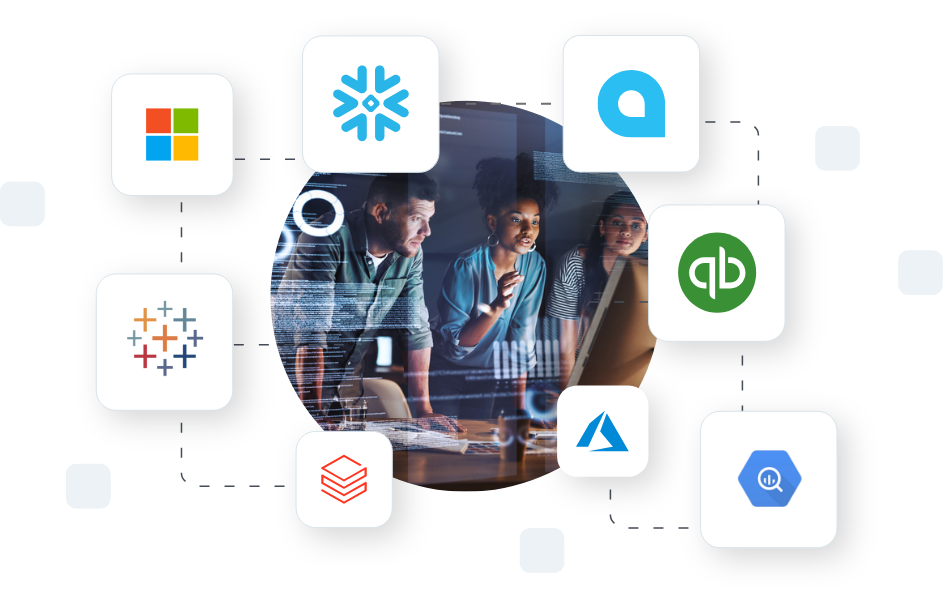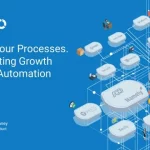What is SaaS Integration and How Does it Help Your Business?
Learn the basics of SaaS integration and why an iPaaS helps you do it right

Almost every company in the world uses software as a service (SaaS) applications — Salesforce is currently the largest provider of SaaS apps, followed by Microsoft, Adobe, Box, and Amazon. You probably use dozens of them every single day, and you’re not alone. Even small non-digital businesses, such as your local coffee shop, use them. They might use Shopify to take online orders, Square to process payments, and Google Docs to share their employee’s schedules.
Software as a service came about quickly, gaining steam in the 2000s, and within 10 years it had completely changed the way business used to be done. Whereas software has been around for a long time, business applications were purchased via licenses with service contracts and remained static. The application did not work everywhere, and did not get better automatically. You would have to wait for an upgrade of features that you had to pay for and install yourself.
With SaaS, the applications are managed through your subscription. They work anywhere, and you wake up to improvements and upgrades without having to do anything — it is automatically done for you.
That’s the effect SaaS has had on our world. By digitizing business functions while continuously and automatically improving themselves, they made business easier and faster.
What is SaaS integration?
In simplest terms:
SaaS integration connects and automatically sends information from one app to another.
One application may need information that is created in another application. Without integration, you have to manually enter the data from one app to another, which can be time consuming and error-prone.
SaaS integration is the process of connecting the apps together, allowing them to “talk to each other.” Whether to synchronize the data in multiple locations, or to move data along a process from application to application, SaaS integration automates that process.
Here’s an example:
You run an online store through Shopify, and your accounting team uses Freshbooks. When someone makes an online purchase, that information needs to go to accounting to be booked and fulfilled. You could manually send that information via email every time an order comes in, which would then be typed up in the accounting system. But if you’ve integrated Shopify with FreshBooks, you don’t need to manually transfer any information — it happens automatically.
SaaS Integration vs. App Integration vs. API Integration
Is SaaS integration the same as integration, app integration, and API integration?
In this era of SaaS, SaaS integration, integration, and app integration can be used interchangeably. SaaS has become so common that we don’t even need to say it. Integration alone is enough.
API integration is a method in which integrations are done. API, or Application Programming Interface, is the set of code-based instructions that indicate how you can send or receive data from an application. The most common API type today are the RESTful APIs.
Traditionally, API integrations have required developers who would actually code how one application talks to another. In more recent years, we’ve seen the development of iPaaS platforms (Integration Platform as a Service) that make it much easier to do API integrations without the need for technical API knowledge.
SaaS Integration Benefits
Saves Time
This benefit is fairly obvious. When your business tools can transfer information automatically, you don’t need to spend the time and resources doing it yourself. Set up the integration and that’s it. No more manual entry.
Reduces or Eliminates Human Error
Dealing with mistakes that happen during manual data entry can be one of the costliest aspects of running a business. It takes resources to track down the error and correct it, and the error itself may have caused delays and unhappy customers for your business.
By automatically sending the correct information from one application to another, SaaS integration removes the middle-person. The information from one tool goes straight to the other, eliminating the chance of human error.
Gives Your Teams Visibility
Integration allows for the right information to be at the right place at the right time. The information can be automatically kept up to date in the tool of your choice. This gives your team the visibility and data they need to make decisions and do their job.
In the Shopify/FreshBooks example above, your accounting team can find what they need in FreshBooks, the tool they likely use the most, without having to check Shopify.
Improves Customer Service
People expect things fast these days, without error. When someone books a hotel room online, they expect a confirmation email and the front desk clerk to have their reservation. If they get a refund on a purchase, the money should be transferred to them immediately, along with another email.
When your business tools are connected, these processes are ready to go, allowing you to provide the best customer service possible.
Makes Processes Scalable
When companies grow, some of the aforementioned functions can get unwieldy. But when your apps are integrated, they can automatically pass information back and forth, without needing humans to do it — and without copy errors.
For any company that is trying to scale, integration is a key component of any automation strategy. It’s an absolute must for large enterprises, which often use 100+ business apps across dozens of departments.
Webinar: Using Integration as a Competitive Advantage
SaaS Integration Challenges
SaaS Sprawl
Perhaps the biggest challenge that integration solves is a potential data silo and manual process mess that can be created with SaaS sprawl. When many applications are added to an organization, there needs to be a holistic approach to ensure these applications seamlessly fit within the larger company’s goals.
Read: The Challenge of SaaS Sprawl
Cost
There are three options when looking at the cost of integration:
- Not doing anything
- Building it using internal or external technical resources
- Leveraging an integration tool
There is a cost associated with leveraging tools, but there is often an even bigger cost in dedicating expensive technical resources to build integrations who could otherwise be focused on building product or other revenue-generating activities. And Celigo’s Integration Platform — the easiest, fastest, most flexible integration platform available — is worth the price.
See: Celigo Platform Product Information
Time
Setting up your integrations can sometimes require some time, and it’s important to set up integrations properly to avoid issues in the future.
Part of what accelerates the time-to-value includes:
- Leveraging pre-built integrations
- Excellect usability
- A community of subject matter experts
This is what Celigo offers. Once you are set up, you will save time every day going forward. They will help you to avoid costly, time-consuming challenges down the road.
SaaS Integration Using iPaaS
The ultimate place any business wants to end up at is the “Connected Enterprise”: a fully integrated network of tools working together seamlessly.
To achieve this, you need an iPaaS, an integration platform as a service.
Celigo’s platform gives your teams complete connectivity across its business apps. It connects not just one to one, but all to all. It lets you connect to thousands of different applications with hundreds of pre-built connectors for the most popular business apps. Users can build their own integration flows that aren’t currently pre-built.
Webinar: Build a Flow with Celigo
The end result is a seamlessly integrated tech stack: all your business apps sharing data without labor-intensive setups, human error, or missing data, saving massive amounts of time and money.
Twenty years ago, SaaS applications took the business world by storm, and they’ve become so crucial to how we work that it’s hard to imagine ever going back. SaaS integration is the next step in technology’s evolution, turning separate tools into a connected enterprise.


